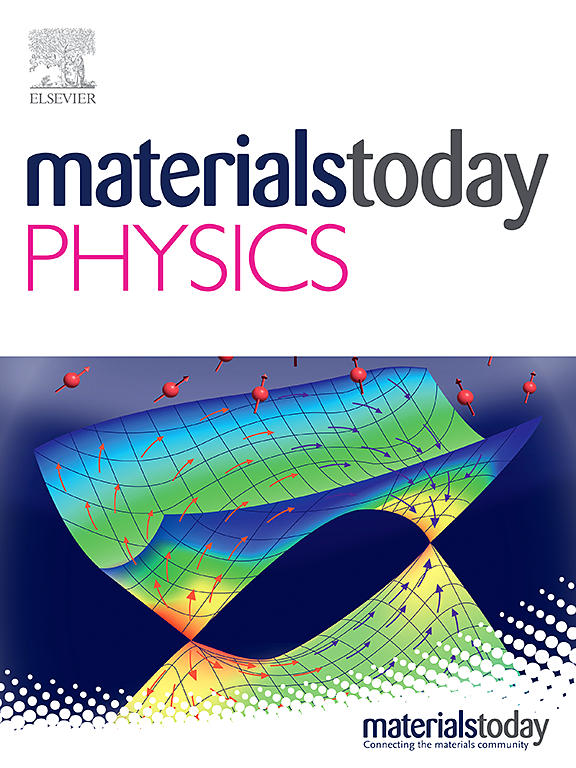Enhancing Mg3(Bi, Sb)2 thermoelectric performance via ZrSb1-x modified grain-boundary
IF 10
2区 材料科学
Q1 MATERIALS SCIENCE, MULTIDISCIPLINARY
引用次数: 0
Abstract
Grain boundaries, as critical structural defects in materials, play a pivotal role in thermoelectric research. Mg3(Bi, Sb)2-based materials, which are prominent n-type thermoelectric materials, are significantly affected by the second phase at grain boundaries. This study investigates the influence of ZrSb1-x on the thermoelectric properties of Mg3(Bi, Sb)2, with particular focus on its impact on the chemical environment at grain boundaries. The ZrSb2 exacerbates the loss of Mg, resulting in a transition of the material from n-type to p-type conductivity. In contrast, the ZrSb3/5 mitigates the formation of Bi-rich precipitate, reduces the interfacial potential barriers, and enhances grain growth. A sample containing 5 % ZrSb3/5 achieved a room temperature zT of 0.9, and the formation of twins was observed. Furthermore, a thermoelectric device composed of this material, paired with commercial p-type Bi2Te3, demonstrated a maximum temperature difference of 67 K and a peak cooling power density of 1.2 W/cm2. The mathematical relationship between the device's COP under any operating condition and its fundamental parameters (Qc,max, ΔTmax and Imax) was derived.
通过 ZrSb1-x 改良晶界提高 Mg3(Bi, Sb)2 热电性能
晶界作为材料中重要的结构缺陷,在热电研究中起着举足轻重的作用。Mg3(Bi, Sb)2基材料是一种突出的n型热电材料,晶界处的第二相对其影响较大。本文研究了ZrSb1-x对Mg3(Bi, Sb)2热电性能的影响,重点研究了ZrSb1-x对晶界化学环境的影响。ZrSb2加剧了Mg的损失,导致材料从n型电导率转变为p型电导率。相反,ZrSb3/5减缓了富bi析出相的形成,降低了界面势垒,促进了晶粒的生长。含有5% ZrSb3/5的样品室温zT为0.9,形成<;双胞胎被观察到。此外,由该材料组成的热电器件与商业p型Bi2Te3配对,显示出最大温差为67 K,峰值冷却功率密度为1.2 W/cm2。推导了设备在任何工况下的COP与其基本参数(Qc、max、ΔTmax和Imax)之间的数学关系。
本文章由计算机程序翻译,如有差异,请以英文原文为准。
求助全文
约1分钟内获得全文
求助全文
来源期刊

Materials Today Physics
Materials Science-General Materials Science
CiteScore
14.00
自引率
7.80%
发文量
284
审稿时长
15 days
期刊介绍:
Materials Today Physics is a multi-disciplinary journal focused on the physics of materials, encompassing both the physical properties and materials synthesis. Operating at the interface of physics and materials science, this journal covers one of the largest and most dynamic fields within physical science. The forefront research in materials physics is driving advancements in new materials, uncovering new physics, and fostering novel applications at an unprecedented pace.
 求助内容:
求助内容: 应助结果提醒方式:
应助结果提醒方式:


